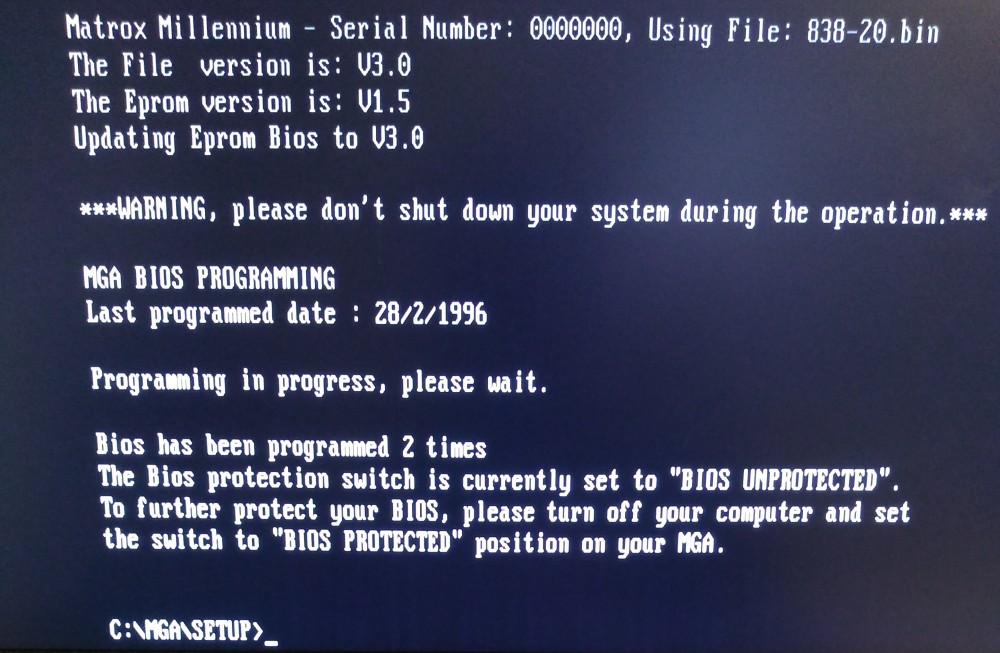When Matrox released their first Millennium graphics card in mid-1995, the inclusion of various forward-looking technologies suggested that they intended it to remain viable right up to its namesake year. While some of these investments in the card's longevity didn't pan out, most notably its anemic 3D acceleration, others clearly did. The exceptional GUI acceleration and exotic WRAM modules ensured strong performance in forthcoming iterations of Windows as well as later DOS games. Another, less touted feature was the ability to update the card's BIOS. At a time when other manufacturers were content to ship out boards with buggy VESA implementations forever etched into archaic DIP ROMs, Matrox did right by their customers by using a re-programmable EEPROM. True to the card's aspirational title, Matrox continue to issue BIOS updates through July of 1999.
The final BIOS revision, included in the v3.51 DOS utilities archive on Matrox's FTP server, is 3.0 - quite a bit later than the 1.5 version present on my original Matrox Millennium from '95. Out of curiosity, I decided to update my board, running a few benchmarks before and after to see what, if any, changes were made that are relevant to DOS gamers.

To my surprise, the differences were worth sharing. The following tests were performed on my lowly Pentium 100Mhz with 16MB of EDO RAM.
| Matrox Millennium 2MB | v1.5 | v3.0 |
|---|---|---|
| 3D Bench 1.0c | 105.4 fps | 105.4 fps |
| Chris's 3D Benchmark 320x240 | 85.1 fps | 85.1 fps |
| Chris's 3D Benchmark 640x480 | 25.7 fps | BROKEN |
| Doom (Max Details) | 56.3 fps | 56.3 fps |
| Quake timedemo 320x240 | 28.7 fps | 28.7 fps |
| Quake timedemo 360x480 | 13.0 fps | 13.0 fps |
| Quake timedemo 640x480 | 9.9 fps | 10.8 fps |
Although no differences were observed in standard resolution benchmarks, Quake at 640x480 shows a whopping 10% improvement. That's only a 1 fps difference on my Pentium 100, but it could be significant on faster machine.
Compatibility wise, the upgrade is a mixed bag. Chris's 3D Benchmark produces an intermittent black screen and ultimately a hard lock at 640x480, but the games I tested ran as well or better with v3.0. Notably, System Shock, which previously refused to allow high-resolution modes, now does so and works flawlessly. In Star Wars: TIE Fighter, I no longer have to manually adjust the screen position in SVGA mode to prevent the right side from being lopped off. Overall, I'm pleased with the results.
If you have an old Matrox PCI card lying around, I encourage you to dust it off, update the BIOS and let us know what you observe on Twitter or Instagram.
